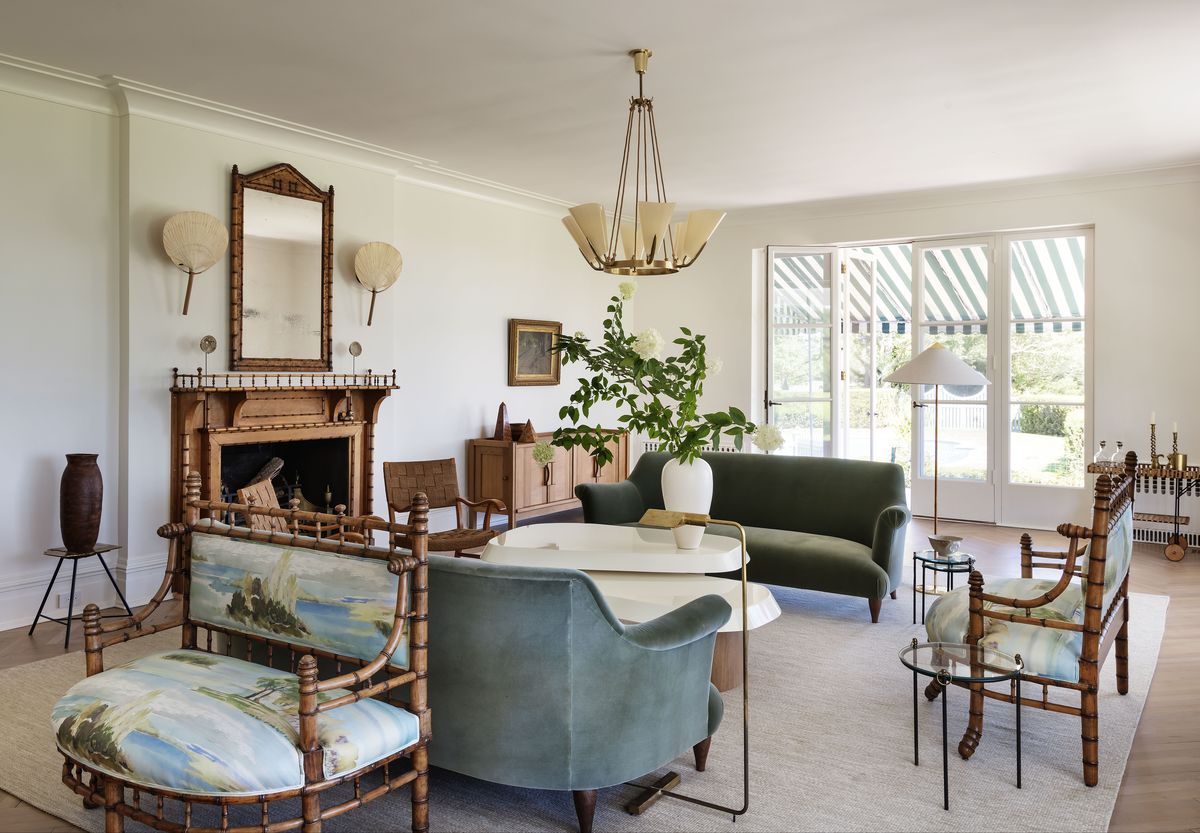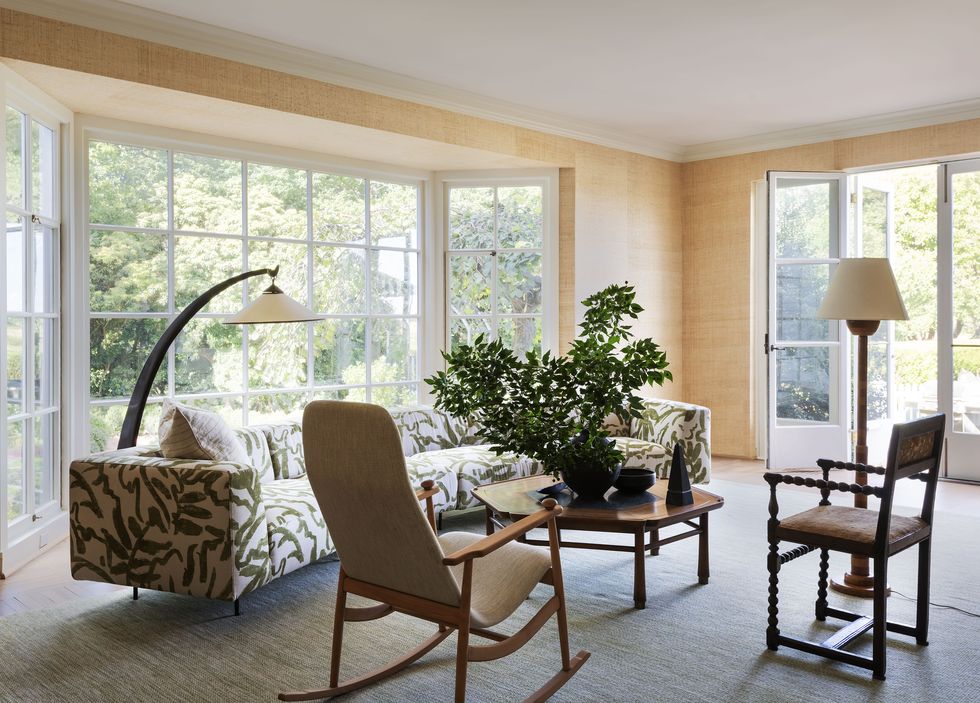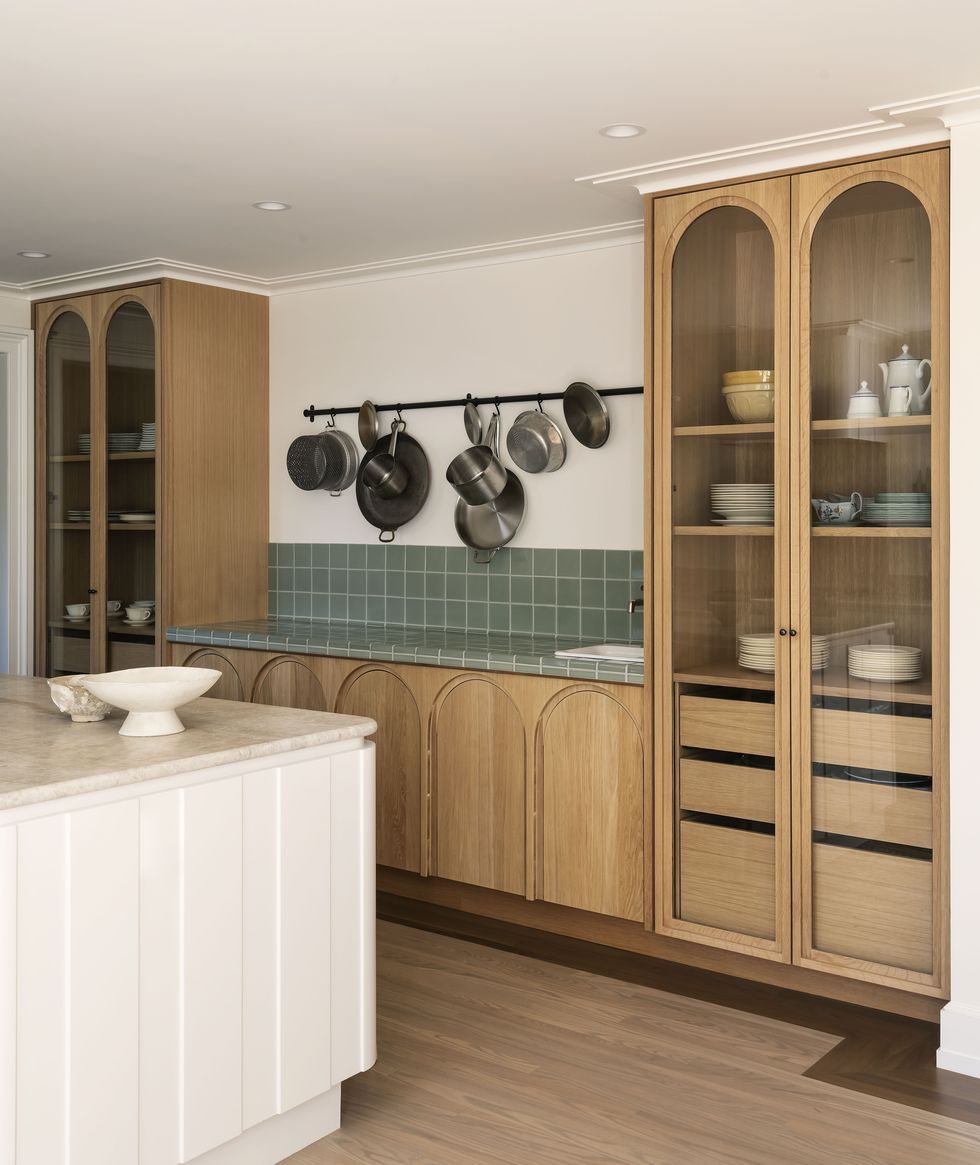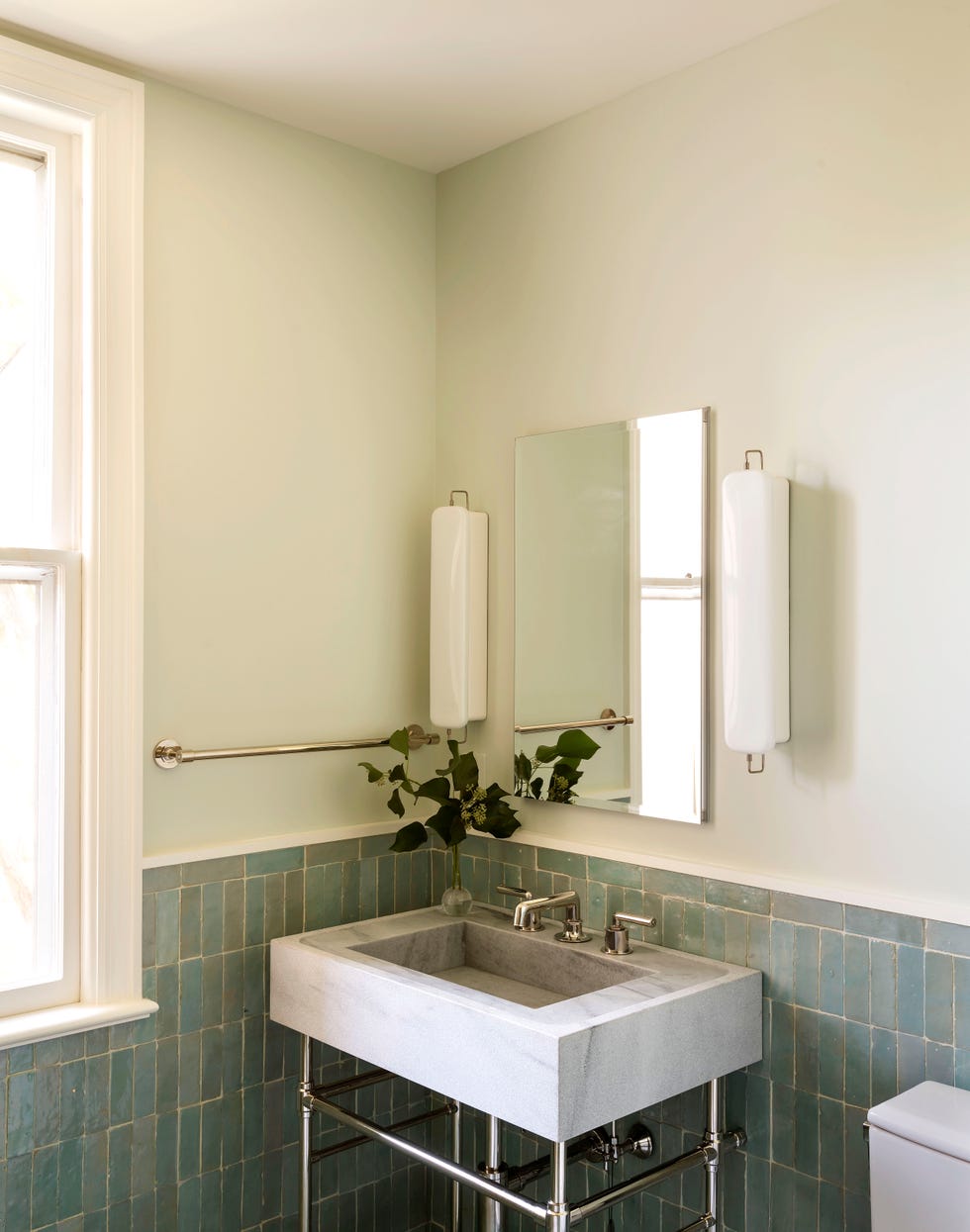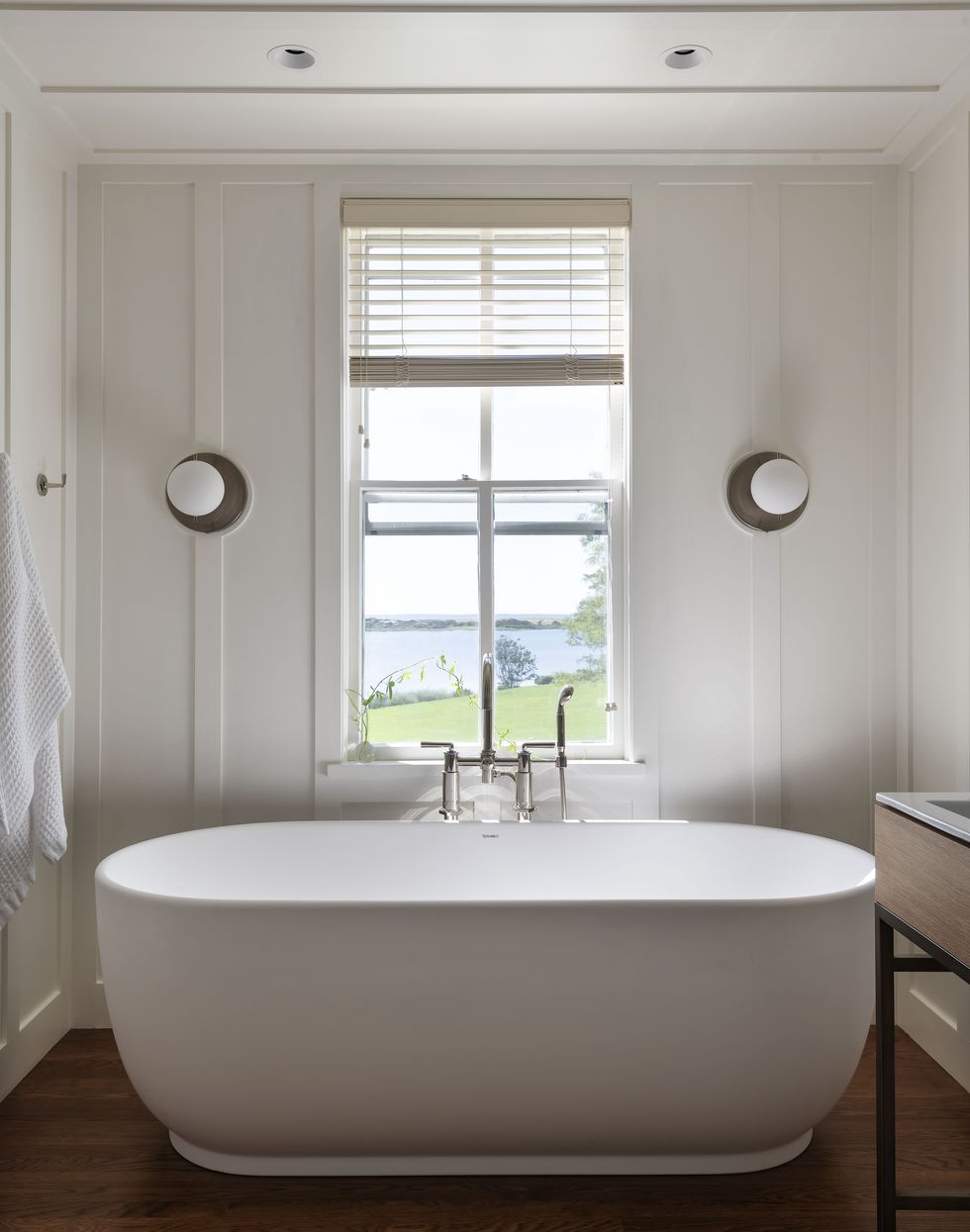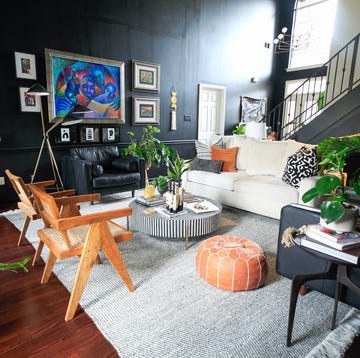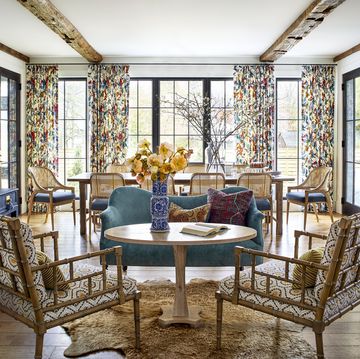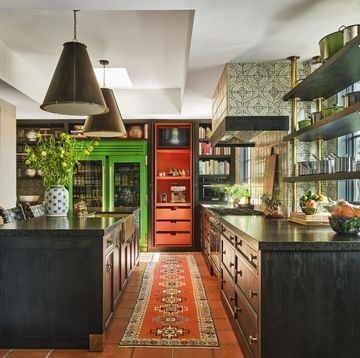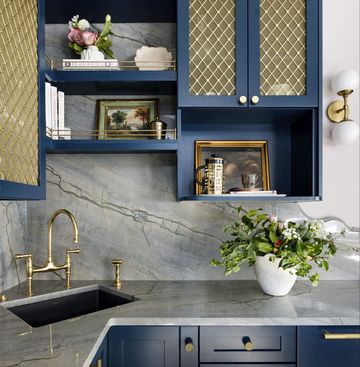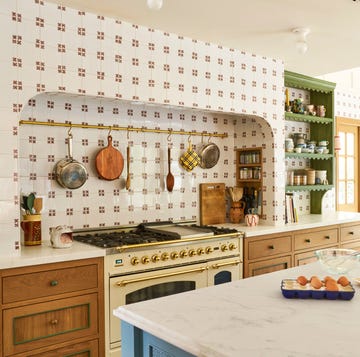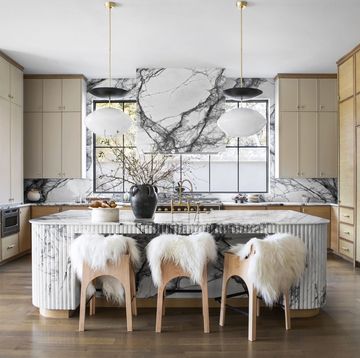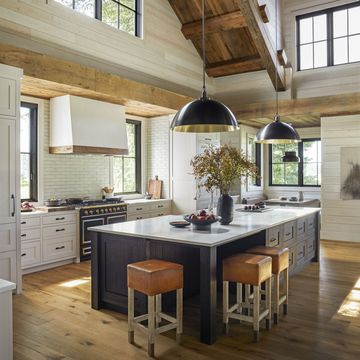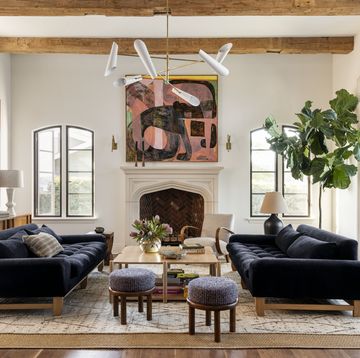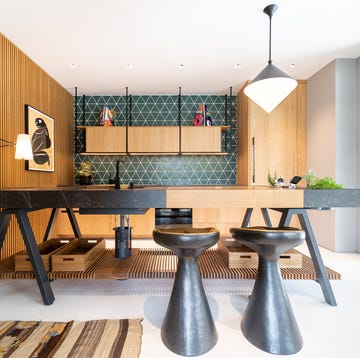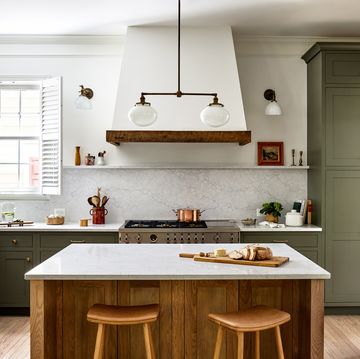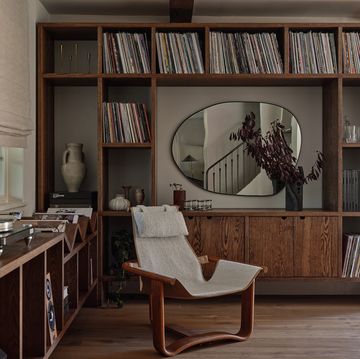The partners behind the Brooklyn-based design studio Workstead—Robert Highsmith, Stefanie Brechbuehler, and Ryan Mahoney—always draw inspiration from a project’s surroundings. “Digesting the visual landscape is a real entry point as to what our design should be,” Mahoney notes in Workstead: Interiors of Beauty and Necessity, the firm’s design book published by Rizzoli last fall.
The approach is apparent in the trio’s re-imagining of Sommariva, a 6,000-square foot home in East Hampton, New York. The storied residence, constructed in 1872, overlooks Hook Pond and the Atlantic Ocean beyond it. Those views, which have remained constant for generations, were as important an influence on the interiors as the building’s Italianate architecture.
Workstead celebrated the lush, coastal setting using dusky blues and greens along with finishes and fixtures in natural materials. Warm white walls with original moldings are a neutral backdrop for a mix of pared-down antiques and furniture distinct enough to become future collectibles. Medium wood tones mingle with upholstery in sumptuous solids and playful patterns. Grasscloth wallcovering and rattan lights add earthy texture.
More From House Beautiful

The studio’s blend of styles and dedication to honest craftsmanship imbues a sense of place that is simultaneously timeless and fresh. The design bows to the home’s property and provenance while providing the casual comfort that befits the modern-day, multigenerational family who lives here.
Living Room
Shown above.
Antiques and next-generation collectibles represent the homeowner’s respect for the past with a desire for contemporary expression. In the living room, a pair of sofas upholstered in blue and green velvet are casual, modern, and cozy centerpieces that anchor the more rustic antiques around them. Sofas: Pinch for The Future Perfect. Chandelier: 1stDibs. Floor lamp: Suite NY.
Sitting Room
Using fabric and wallpaper, Workstead mixed graphic elements with tactile materials to create a playful yet inviting atmosphere. The scenery was an integral part of the design in the sitting room, which looks out over a large bay window.
Office
The team went for a monochromatic treatment in the office, painting the walls and trim in the same jewel tone.
Kitchen
Featuring colors and textures drawn from the coastal environment, the room evokes its setting. For example, the custom, artisanal kitchen cabinets reference the whalers and plein air painters who once intermingled on Long Island’s South Fork. The storage wall of medium-tone wood cabinetry and blue/green tile infuses warmth while the white cabinetry on the working side of the room keeps it light.
"This kitchen is emblematic of our studio’s ability to both honor the past and look to the future," says the Workstead team.
Dining Room
The rattan pendant light hints at the beachy environment and adds texture above a smooth wooden tabletop.
Bathrooms
Q&A
House Beautiful: What's the history of this home?
Workstead: The Italianate-style residence known as Sommariva occupies a special place in the identity of East Hampton. The 1870s-era building, which stands on a colonial-era allotment, kindled the village’s transformation into a world-famous resort community.
HB: What was the most important consideration in designing the interiors?
W: While designing the interiors, it was important to preserve and highlight the original architectural detailing while selecting furnishings and colors that celebrate the local landscape and history.
HB: How did you achieve your vision?
W: To reference the home’s coastal setting, color was selected thoughtfully to create a connection between the interiors and the landscape. We combined muted, neutral tones with richer accents. By accenting the neutral color palette with bolder color choices and some nature-inspired patterns, the color palette remains anchored but still feels playful and contemporary.
HB: How did you prioritize the investments?
W: We selected key spaces to focus on and left others lightly touched. This allowed us to create one-of-a-kind rooms that feel fully considered, from the architecture to the finest decorative detail. By creating select show-stopping rooms we were able to avoid diluting the design overall, which can happen when you try to stretch the budget throughout. You can always tackle the remaining spaces at a later time.
HB: What was your favorite part of the project?
W: We love working on kitchens! It’s what we have become known for. We reinvent at every turn, always starting with the most basic questions, such as, "What is a cabinet door and how do you open it?" Then we develop a unique solution that speaks to our clients' individual desires and utilitarian needs.
Kitchen contractor: Trunzo Building Contractors
Follow House Beautiful on Instagram.
